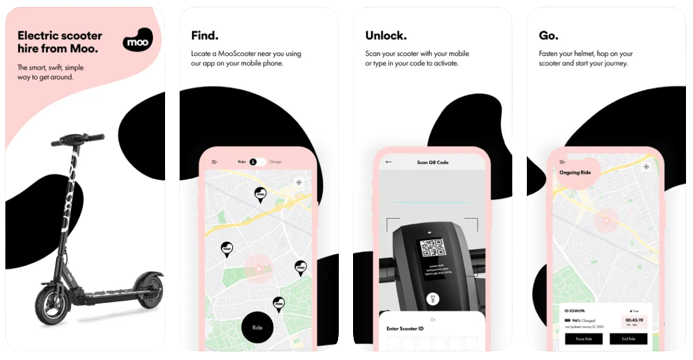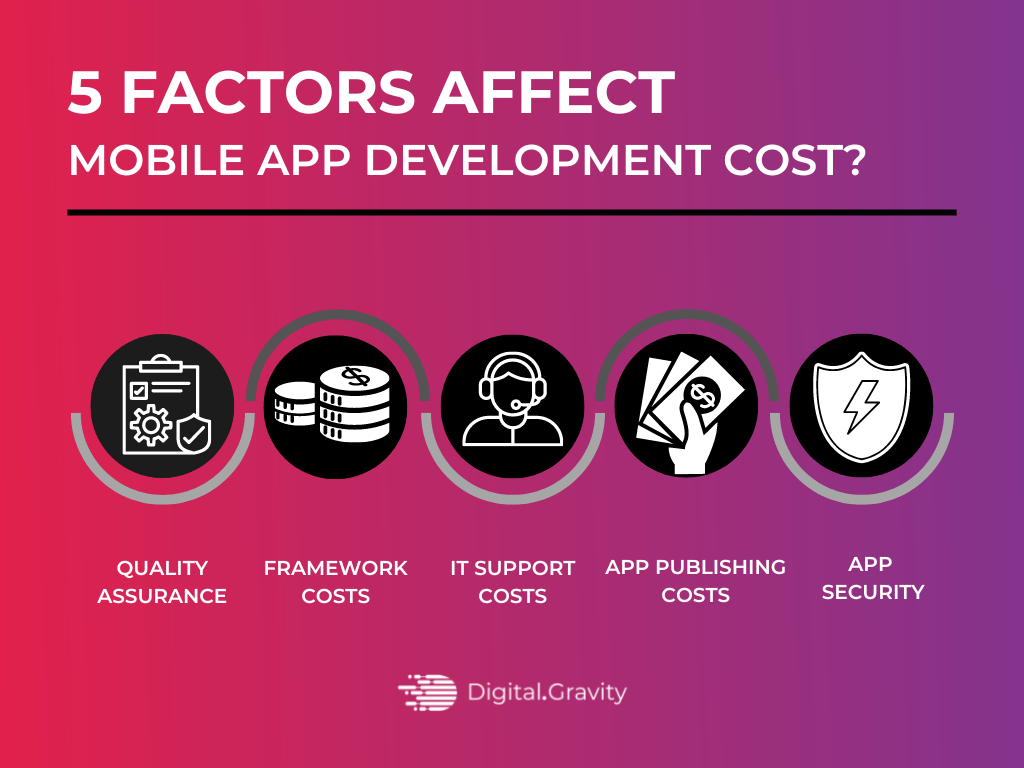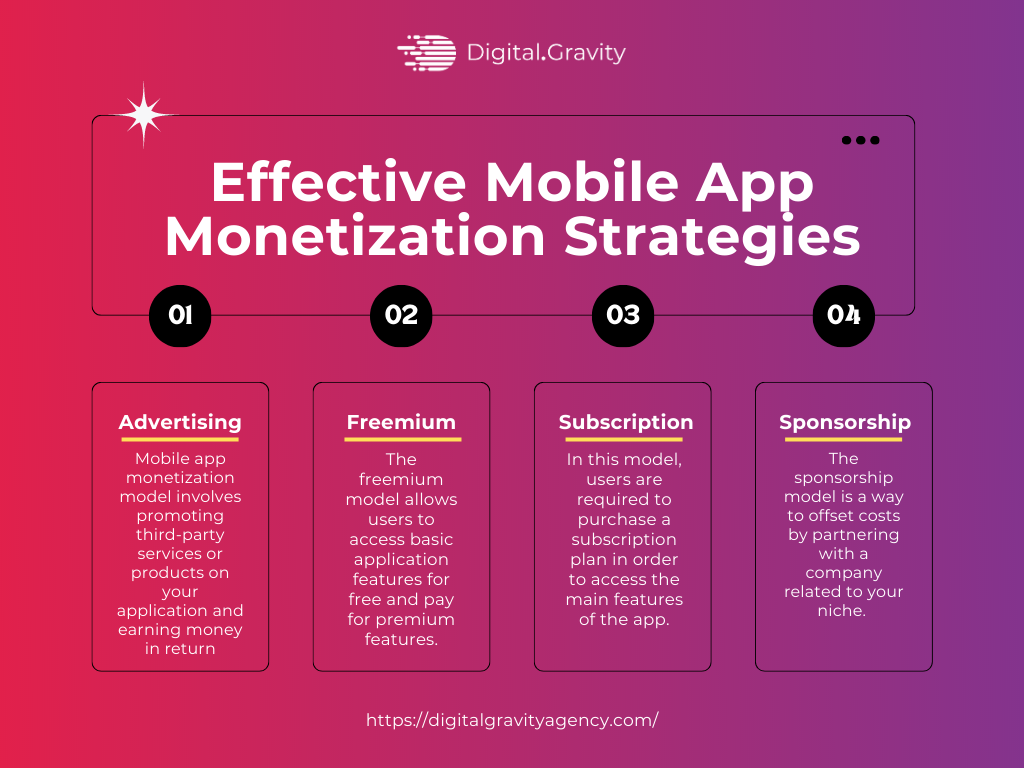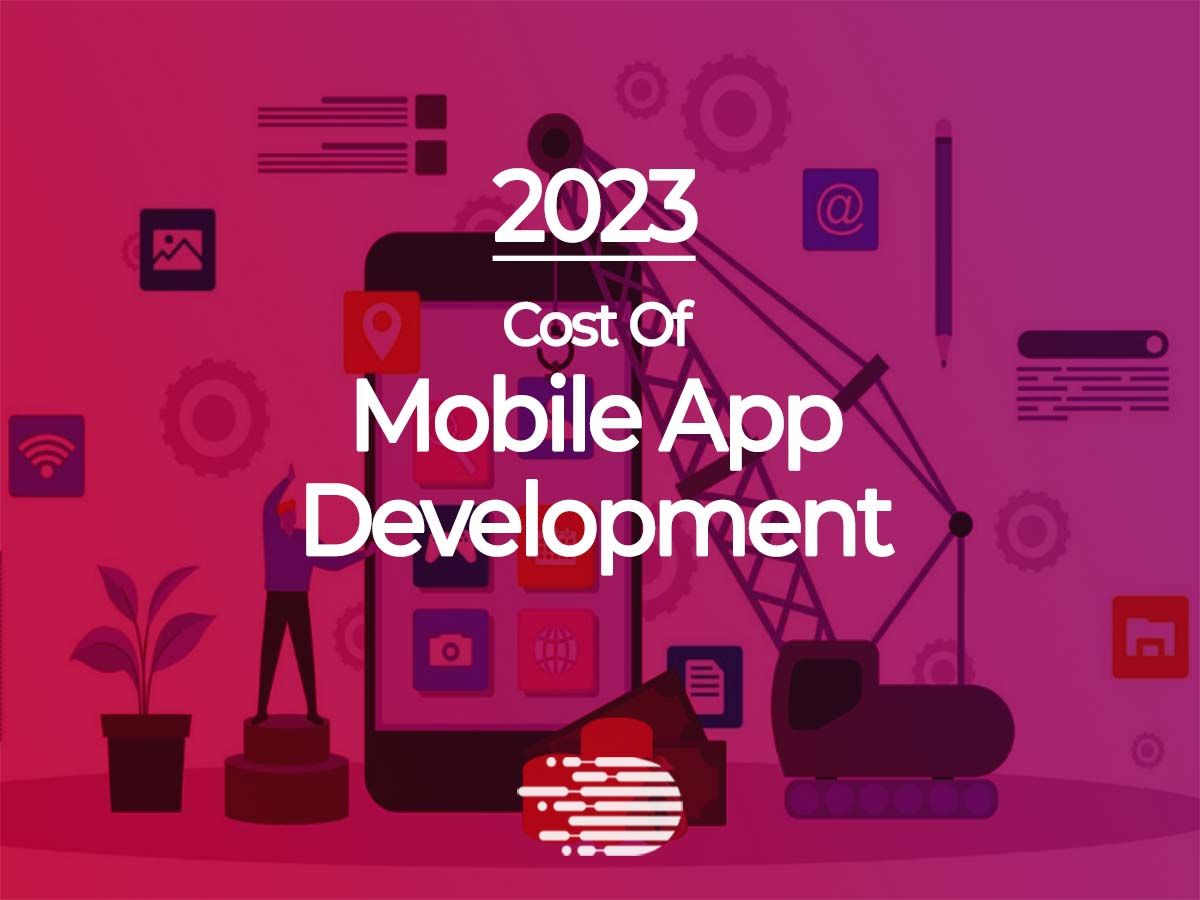With the proliferation of smartphones and the increasing reliance on mobile devices, mobile apps have become a crucial part of our daily lives.
Despite the cost, a well-designed and executed mobile app can provide significant benefits for your company in terms of increased revenue, improved customer engagement, and enhanced brand awareness.
Whether you are planning to build a new application for your business or want to know more about the mobile app development cost, this blog will provide you with all the information you need to get started.
Let’s delve into the exciting world of mobile app development and consider the budget and cost before embarking on the development process.
What Factors Influence The Cost Of Mobile App Development?
Mobile app development is a costly endeavor. But in today’s digital landscape, no business can thrive without a well-functional mobile application.

Factor #1 – Application Platform
When planning to develop a mobile app, it is crucial to select a platform. Depending on the intended audience, options include creating an app for iOS, Android, or cross-platform.
For startups with limited budgets, it is recommended to initially focus on one platform and expand to others later on. Statista surveyed that the total revenue is forecasted to grow at an annual rate of 7.77% (CAGR 2022-2026), leading to a projected market size of $614.40 billion by 2026.
Some popular app development platforms to consider include:
Native app platform ( Android & iOS ): Native app development refers to developing a mobile application exclusively for a single platform. This type of application is built using programming languages and tools that are specific to a single platform.
For example, a native Android app could be built using Java or Kotlin, while an iOS app could be built using Swift and Objective-C.
Cross-platform: It refers to the creation of software applications that can be run on multiple operating systems or platforms. This allows developers to write one codebase that can be used to develop apps for different devices, such as smartphones, tablets, and personal computers.
Some popular examples of cross-platform development frameworks include React Native, Xamarin, and Flutter.
| Type of App |
Average Cost |
| Native apps (Android & iOS) |
$50,000 to $100,000 |
| Cross-platform apps |
$25,000 to $60,000 |
Factor#2 – Application Complexity

The app complexity factor is the level of difficulty and effort required to develop a mobile application. It includes factors such as the number of features and functionalities, the amount of data being processed, the complexity of the user interface, and the use of advanced technologies such as machine learning and artificial intelligence.
The higher the app complexity factor, the more expensive it will be to develop the app.
Factor#3 – Size And Location Of App Development Team
The size and location of an app development team impact the development process and outcome of a mobile app.
When deciding how to develop an application, there are various options to choose from including a professional app development company, a local team, an in-house development team, or a freelance developer.
However, a reputable mobile app development company can provide exceptional results in terms of creating advanced apps with superior features and capabilities.
A larger team can allow for more specialized roles and a faster development process, but may also lead to increased communication and coordination challenges.
A team that is located in close proximity can facilitate better communication and collaboration, but a distributed team can provide access to a wider pool of talent.
Ultimately, the specific needs and goals of a project determine the most appropriate size and location for the development team.
By 2025, the mobile app development market will produce 613 billion dollars.

Factor # 4 – App Features And Functionalities
In a competitive landscape, millions of applications are available. The features and functionalities of your mobile application should stand out in the app market.
Seamless performance of tasks, better user experience, user-centric interface, and premium-quality design are essential for providing an exceptional app experience.
Let’s examine the typical cost and duration for creating a basic set of features in an app.

Factor#5 – Application Category
The cost of creating an app can differ significantly depending on the category it falls into. Factors such as the number of users, features, and security requirements can all affect the cost, and these can vary greatly between different categories.
For example, a simple utility app such as a calculator or a to-do list app will generally cost less to develop than a complex gaming app or a social media app.
Additionally, certain app categories may require specialized features or functionality, such as GPS integration for a fitness app or real-time data syncing for a messaging app, which can also impact development costs.
On-Demand Applications: These applications typically have three different versions: one for users, one for providers of services, and one for the business. An example of an on-demand app is Acti drive, which uses IoT technology to make driving more convenient for users.

Hardware-Dependent Applications: These IoT-based apps rely heavily on hardware devices to function, such as extracting data or sending commands for certain actions. A well-known example of this type of app is “Moo”, an eScooter application that manages transportation at a micro level and is completely dependent on hardware.
Below is a list of mobile application types and the average cost of development by type.
Factor #6 – App Design and Animation
Another factor that contributes to the cost of creating an app is the design of the app. A well-designed app is essential for engaging users. There are two main options for app design – custom and standard UI.
Custom UI is more difficult and expensive to create than standard UI. Let’s take an example of a mobile application that was developed for Pizza hut. It included unique features and animation to enhance the user experience and increase the app’s conversion rate by 30%.
In addition to the overall design, mobile app development also includes creating wireframes and incorporating animation.
Wireframes: They are used to plan out the user experience and navigation, and can be created using tools like MARVEL, Balsamiq, and Photoshop.

Animation: It is used to make the app more engaging and user-friendly, and is commonly found in games and social media apps.
| App Process |
Design Tasks |
Average Development Time |
Average Development Cost (Approx) |
| App design research |
Market research
Competitor analysis
Market trend analysis
Selecting ideal solutions
|
Based on the niche and available resource |
$99-$349 |
| UX design |
Rough sketches
Low fidelity wireframes
High fidelity wireframes
|
Simple- 10-14 hours
Medium- 50-60 hours
Complex- 150+ hours
|
$1,999-$7,999 |
| UI design (visuals) |
Mood boards
UI mock-up samples
Final UI mock-ups
|
Simple – 14-20 hours
Medium- 80-90 hours
Complex- 100+ hours
|
$9,999-$39,999 |
| Branding |
Creating brand identity |
Logos, icons, and social media |
$4,999-$19,999 |
| Animations and illustrations |
Visualizing user and on-screen content
Direct manipulation
User action visualization
|
Based on the level of animations |
$999-$19,999 |
Factor # 7 – Code Reuse
Using existing code, or code reuse is a technique that can significantly reduce the cost of mobile app development. This can be done by taking the code of an existing app and modifying it to include a business’s own branding elements.
However, it’s important to note that only using common elements such as a login or contact us feature, and developing the rest of the app from scratch can help maintain a unique brand identity.
Using existing code can result in a cost savings of 20-30% compared to developing an app from scratch.
Factor # 8 – App maintenance and updates
Expenses do not end after the completion of the app development process. Businesses will need to continue updating their apps to keep up with changing market trends, new devices, and OS versions, which can be costly.
Some of the expenses that may be incurred post-development include bug fixes, design changes, and ongoing maintenance costs, which are typically estimated at 20% of the total development cost per year.
What Hidden Factors Affect The Mobile App Development Cost?
In this section, we will examine the frequently encountered hidden expenses in mobile app development projects. Being aware of these elements can minimize risks, save time, and resources. Let’s delve into each of them thoroughly!

Factor #1 – Quality Assurance
Depending on the scope of your app, additional personnel may be necessary such as a quality assurance agent, project manager, or business analyst. They assist in keeping development costs in line with the app development budget.
Factor #2 – Infrastructure costs
Infrastructure costs refer to the expenses incurred for maintaining and operating the systems for data storage, data delivery, and application hosting. These costs can make a project more expensive and complex. Some examples of infrastructure costs include servers, data storage, and development tools and libraries.
Factor #3 – IT Support Costs
IT support services and ongoing technical support is essential for creating a top-notch app, but these costs might grow over time. Some examples of these services include updating iOS and Android versions, resolving bugs, and maintaining application programming interfaces (APIs).
Factor # 4 – App Publishing Costs
When creating apps, developers take into account the guidelines set by app stores. The fees for submitting apps to these stores are generally not substantial.
To submit an app to the Google Play Store, a one-time fee of $25 is required. Apple charges an annual fee of $99 to submit apps to the App Store.
If you want to distribute your app only within your company, you can join the Apple Developer Enterprise Program for $299 per year, which allows you to provide your app through the App Store. Google Play does not charge a fee for this type of distribution.
Factor # 5 – App Security
Ensuring the security of your app is crucial as it builds trust with users and protects their sensitive information. Developing a comprehensive security plan at the beginning stages of the app’s creation and allotting time for testing and security checks can prevent costly and reputation-damaging issues.
What Are The Effective Mobile App Monetization Strategies To Try In 2023?
Staying afloat could be challenging for App developers without having access to a handsome sum of money through external funding.
Mobile app monetization strategies help developers generate revenue from a mobile application. However, it is important to know which mobile app monetization method will be most effective for your business application.

1. Advertising
This monetization model involves promoting third-party services or products on your application and earning money in return. It is a popular method for earning revenue from an app.
2. Freemium
The freemium model allows users to access basic application features for free and pay for premium features. It also allows for additional revenue streams like in-app advertising.
3. Subscription
In this model, users are required to purchase a subscription plan in order to access the main features of the app. Yearly, monthly, and daily subscription options are available. Additionally, platforms like Google and Apple provide the capability for users to manage their subscriptions through their respective platforms.
4. Sponsorship
The sponsorship model is a way to offset costs by partnering with a company related to your niche. In exchange for financial compensation, the company’s brand and products may be featured in your business app or users may be directed to their website.
What Are The Most Used And Downloaded Applications In The World?
To understand why some apps are successful while others fail, let’s talk about how some of the global applications dominate the app market.

1. Tiktok
With more than 672 Million downloads TikTok emerged as the leaders in 2022. TikTok is a ubiquitous app that has had a significant impact on entertainment. It enables users to lip-sync and recreate scenes from movies and music videos and offers various filters and effects to improve videos and images.
The typical cost of creating a similar app ranges from $ 50,000 to $300,000 depending on the development platform.
2. Instagram
Instagram users have exceeded today leading to more than 548 million downloads in 2022. It is one of the top social media platforms that are used to promote products and services. Instagram is mostly used in influencer marketing by celebrities and bloggers.
The development cost for an application like Instagram ranges somewhere between $30,000 to $500,000.
3. WhatsApp
With more than 424 Million downloads WhatsApp has become one of the most popular social media platforms in the world. This messaging app allows users to send messages, make video and audio calls, share photos and videos, and more.
The development cost for an application like Whatsapp ranges somewhere between $35,000 to $250,000.
4. Capcut
Capcut, one of the most versatile and easy-to-use video editor apps, has been downloaded by 357 million users worldwide. It is mainly used for video editing and animations. Capcut has been the top trend as it is favored by many bloggers who influence consumers’ buying behaviors.
The development cost for an application like Capcut ranges somewhere between $30,000 to $300,000.
5. Snapchat
Another top trending app in 2022 was Snapchat. An estimated 330 million users have downloaded Snapchat all around the globe. Snapchat offers many tools and filters to entertain its customers. It is also used for marketing purposes as it helps with engagement to boast sales and profits.
The development cost for an application like Snapchat ranges somewhere between $40,000 to $300,000.
How Digital Gravity Agency Can Help You Estimate The Mobile App Development Cost?
Creating an app can be a complex and costly process, with many factors influencing the final cost. However, by taking into account all the necessary elements, you can arrive at a more accurate estimate for turning your app idea into a reality.
If you need assistance in determining the cost of developing your app, consider consulting a reputable mobile app development company like Digital Gravity Agency for comprehensive mobile app development services.
The experts at Digital Gravity Agency have a proven track record of designing and developing cutting-edge apps for some of the biggest brands in the world. So, if you want to bring your innovative app idea to life, don’t hesitate to reach out to the team.
FAQs
1 – How much does it cost to create and maintain a mobile application?
The tentative cost for building a mobile application is somewhere between $40,000 to $150,000. It can exceed $300,000 in certain cases. The keyword here is tentative because various factors such as the app type, complexity, functionality, and the development approach might influence it.
2 – Can I save money by outsourcing app development to a cheaper location?
Yes! Outsourcing mobile app development to a country with lower labor costs can help you save money.
3 – What is the average time taken to develop a mobile application?
The average time for developing a mobile application depends on several features such as the complexity of an application, size of the development team, and many more. However, on average, it takes around 4 to 6 months to develop a simple application.















